Hip Hop: Five Decades of innovation, influence and impact
By Charlene Muhammad, National Correspondent- June 6, 2023
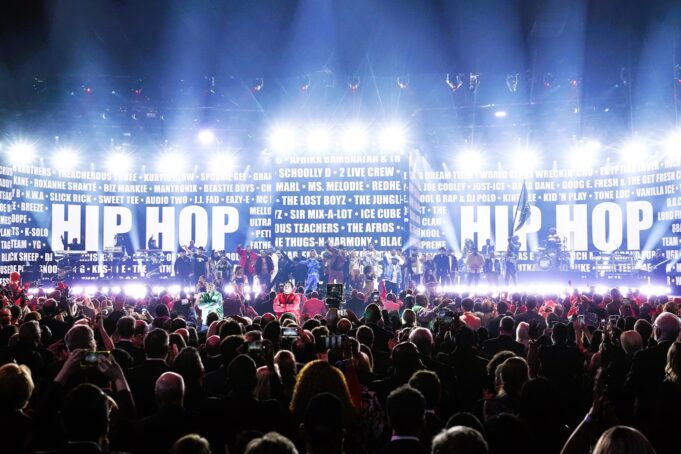
From Bronx block parties to global domination, hip hop’s influence has endured for half a century. In 2023, the world celebrates a genre that has not only shaped music but also impacted fashion, art, and social activism.
Fifty years ago, in the vibrant neighborhoods of the Bronx, New York, a cultural revolution was born. It grew to include the “five elements of hip hop,” emceeing (rapping), deejaying, break dancing, graffiti and beatboxing. It has evolved into a global phenomenon that has transcended racial, geographical, and language boundaries. Celebrations are in the works nationally and internationally.
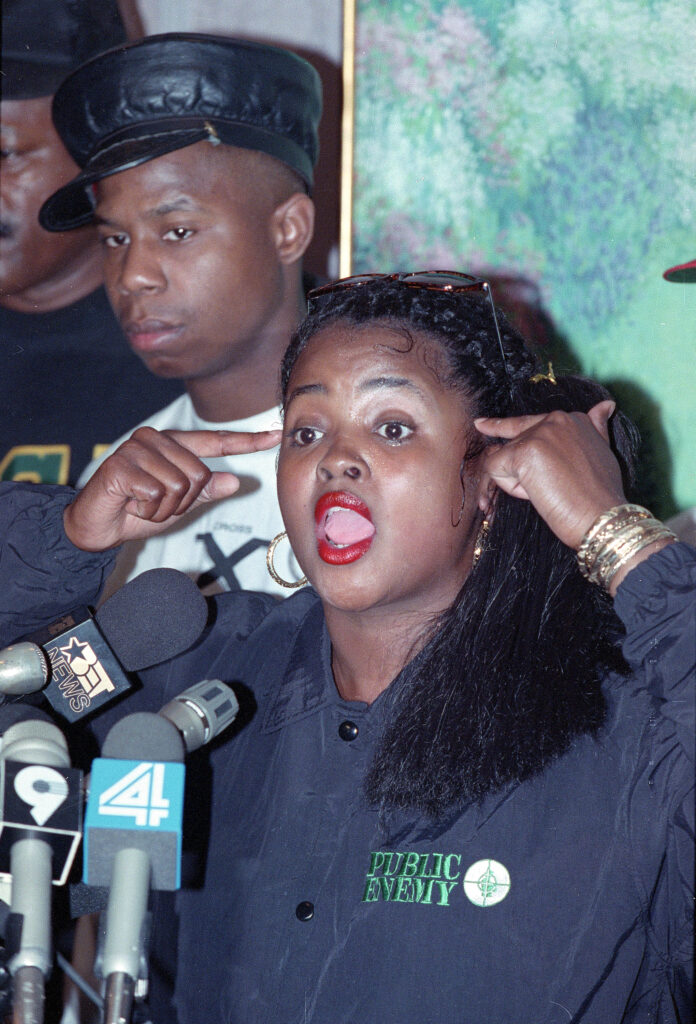
Rap artist Sister Souljah speaks at a conference in New York City on June 16, 1992. Souljah made claims that U.S. Presidential candidate Bill Clinton wasn’t in touch with the problems of Black-America. Hip-hop star Doug E. Fresh is in the background. (AP Photo/Alex Brandon)
“The detractors have been proven very wrong. Hip hop at its genesis was, in my opinion, a God-inspired phenomenon,” stated Student Minister Dr. Wesley Muhammad, an author, researcher and Ph.D. in Islamic Studies. He is also a member of the Nation of Islam.
Student Minister Muhammad thinks that hip hop’s turning 50 has unfortunately morphed from what began as a God-inspired phenomenon into one that is fake and controlled. The reason is, the power of hip hop is so large in that it shapes thought and life so, it’s very important who is riding this black stallion, he pointed out. “We have to get God back in the saddle of hip hop,” he stated.

The birth of a movement
In the early 1970s, hip hop emerged from the streets, fueled by the creativity and resilience of marginalized Black and Brown communities. According to many hip hop historians, the origins are traceable to a back-to-school party in the rec room of a Bronx apartment building in 1973.
Pioneers like DJ Kool Herc, Grandmaster Flash, and Afrika Bambaataa laid the foundation, introducing innovative techniques like breakbeats and turntablism, or scratching—the manipulation of sounds and samples to create new beats.
The energy and spirit of hip hop resonated with a generation hungry for self-expression, and a movement was born. The founder of the Five Percenters (a.k.a. the Nation of Gods and Earths) was Clarence 13X Smith (a.k.a. Father Allah), a former member of the Nation of Islam’s Temple No. 7 and is credited with taking aspects of the Teachings of the Most Honorable Elijah Muhammad known as the Supreme Wisdom, to young people in New York. For many, during the late 1980s and mid-1990s, their first exposure to the voice of the Honorable Minister Louis Farrakhan was hearing his speeches mixed over beats, or perhaps a reference in a rap song.
There isn’t another phenomenon that has shaped culture and society over the past five decades, on a global level to the extent that hip hop is, noted Student Minister Muhammad.
“The detractors have been proven very wrong. Hip hop at its genesis was, in my opinion, a God-inspired phenomenon,” stated Student Minister Dr. Wesley Muhammad, an author, researcher and Ph.D. in Islamic Studies. He is also a member of the Nation of Islam.
Student Minister Muhammad thinks that hip hop’s turning 50 has unfortunately morphed from what began as a God-inspired phenomenon into one that is fake and controlled. The reason is, the power of hip hop is so large in that it shapes thought and life so, it’s very important who is riding this black stallion, he pointed out. “We have to get God back in the saddle of hip hop,” he stated.
The birth of a movement
In the early 1970s, hip hop emerged from the streets, fueled by the creativity and resilience of marginalized Black and Brown communities. According to many hip hop historians, the origins are traceable to a back-to-school party in the rec room of a Bronx apartment building in 1973.
Pioneers like DJ Kool Herc, Grandmaster Flash, and Afrika Bambaataa laid the foundation, introducing innovative techniques like breakbeats and turntablism, or scratching—the manipulation of sounds and samples to create new beats.
The energy and spirit of hip hop resonated with a generation hungry for self-expression, and a movement was born. The founder of the Five Percenters (a.k.a. the Nation of Gods and Earths) was Clarence 13X Smith (a.k.a. Father Allah), a former member of the Nation of Islam’s Temple No. 7 and is credited with taking aspects of the Teachings of the Most Honorable Elijah Muhammad known as the Supreme Wisdom, to young people in New York. For many, during the late 1980s and mid-1990s, their first exposure to the voice of the Honorable Minister Louis Farrakhan was hearing his speeches mixed over beats, or perhaps a reference in a rap song.
There isn’t another phenomenon that has shaped culture and society over the past five decades, on a global level to the extent that hip hop is, noted Student Minister Muhammad.
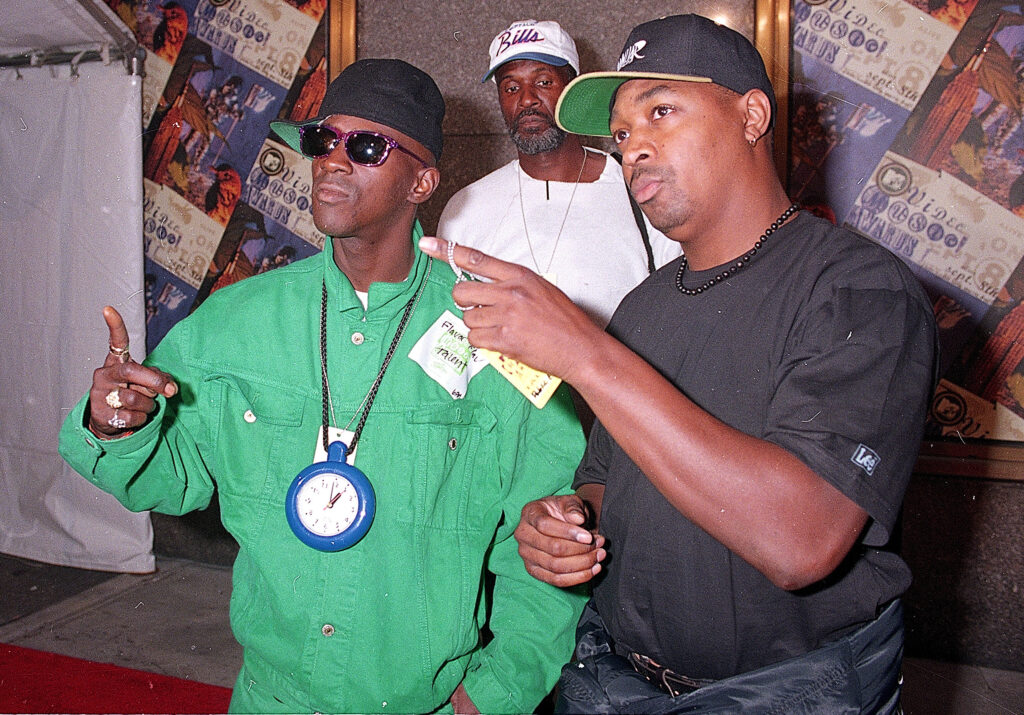
Flavor Flav, left, and Chuck D. of the rap group Public Enemy, pose for photographers upon their arrival for the MTV Music Awards at New York’s Radio City Music Hall, Sept. 8, 1994. (AP Photo/Malcolm Clarke)
“That’s why you know it’s God-inspired. Only God can make another god, and hip hop as a phenomenon is a being of power and force, like no other, certainly no other cultural or even intellectual phenomenon,” he told The Final Call.
“Its reach, its impact, is not just on Blacks, but on Whites. Most consumers of hip hop music commercially are White. So its influence in shaping thought, shaping culture, and shaping behavior is tremendous and I believe unparalleled,” he added.
The Golden Era
The 1980s and ‘90s were known as the Golden Era and there was a rise of iconic artists such as Run-D.M.C., Public Enemy, N.W.A, and A Tribe Called Quest, who pushed the boundaries of lyrical storytelling and musical production. Hip hop became a powerful medium for addressing social issues, shedding light on the realities of urban life, police brutality, and systemic injustice.
Albums like, “It Takes A Nation of Millions To Hold Us Back” by Public Enemy, “By All Means Necessary,” by Boogie Down Productions, “Illmatic,” by Nas, “The Chronic,” by Dr. Dre, “Ready to Die” by Notorious B.I.G. and many more became timeless classics. And though there were few in the beginning, women began taking their place and making their mark in the rap game, including MC Sha-Rock, Roxanne Shante, MC Lyte, Salt-N- Pepa and Queen Latifah,just to name a few.
The genre’s influence began to reach far beyond the streets of New York.
“That’s why you know it’s God-inspired. Only God can make another god, and hip hop as a phenomenon is a being of power and force, like no other, certainly no other cultural or even intellectual phenomenon,” he told The Final Call.
“Its reach, its impact, is not just on Blacks, but on Whites. Most consumers of hip hop music commercially are White. So its influence in shaping thought, shaping culture, and shaping behavior is tremendous and I believe unparalleled,” he added.
The Golden Era
The 1980s and ‘90s were known as the Golden Era and there was a rise of iconic artists such as Run-D.M.C., Public Enemy, N.W.A, and A Tribe Called Quest, who pushed the boundaries of lyrical storytelling and musical production. Hip hop became a powerful medium for addressing social issues, shedding light on the realities of urban life, police brutality, and systemic injustice.
Albums like, “It Takes A Nation of Millions To Hold Us Back” by Public Enemy, “By All Means Necessary,” by Boogie Down Productions, “Illmatic,” by Nas, “The Chronic,” by Dr. Dre, “Ready to Die” by Notorious B.I.G. and many more became timeless classics. And though there were few in the beginning, women began taking their place and making their mark in the rap game, including MC Sha-Rock, Roxanne Shante, MC Lyte, Salt-N- Pepa and Queen Latifah,just to name a few.
The genre’s influence began to reach far beyond the streets of New York.
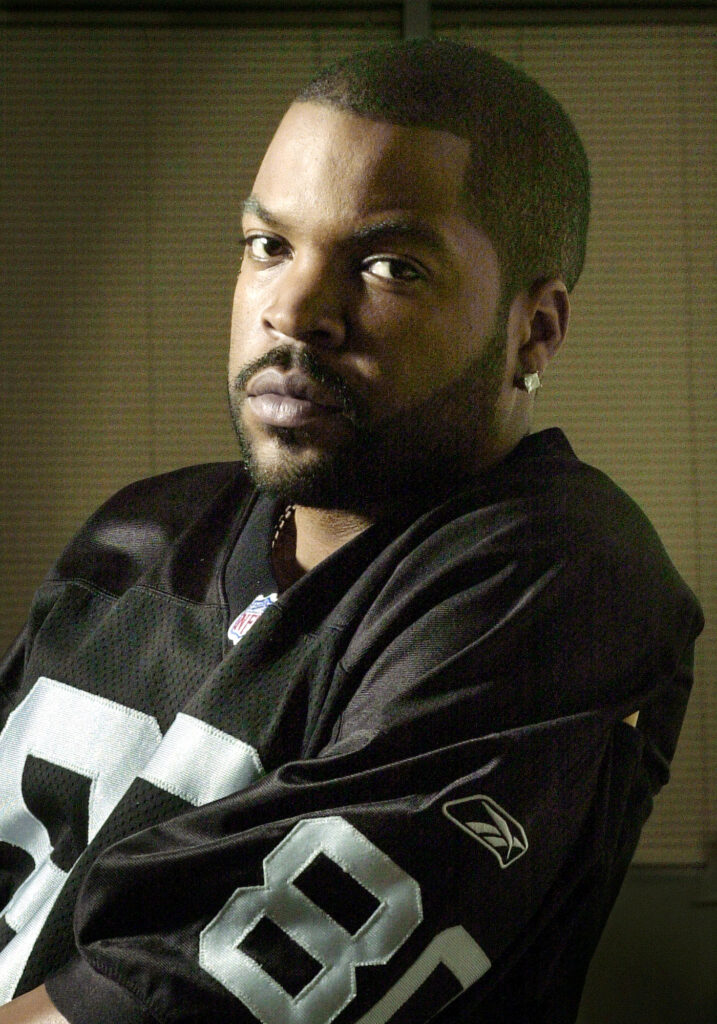
Rap artist/actor Ice Cube poses for a portrait in this Sept. 5, 2002, file photo taken in Los Angeles. Nine months after the Academy Award acting wins by Denzel Washington and Halle Berry, 2002 has turned out to be a good year for African-American actors and black themes in an industry perpetually rebuked for its lack of racial diversity. He scored with “Barbershop,” and had two other films, “All About the Benjamins” and “Friday After Next,” the third in his series of “Friday” comedies. All three movies were developed through Ice Cube’s production company, which the rapper-turned-actor started to broaden his roles.(AP Photo/Reed Saxon,file)
“Hip hop has always been there for me as a genre,” said Big Boy (Kurt Alexander) of the nationally syndicated podcast “Big Boy’s Neighborhood.”
“I was there when it was a ‘fad,’ ‘what is that you’re listening to,’ ‘it’s never gonna last,’” he said. He even tried to rap, to the point he received detention and almost got suspended for participating in cyphers and rapping, Big Boy told The Final Call. He even remembers what the audience used to look like, and that wasn’t a time when every radio outlet was playing some type of hip hop, as today, he said.
“If you were lucky, you got a mixture or something on the weekend … not stations dedicated to it. It was categorized,” stated Big Boy.
Seeing where the culture came from to where it is now, including concerts comprised of all Black and Brown people, to Beyonce and Jay Z at the Hollywood Bowl shows a striking change, he said. “That’s because of the way the crowd looks now, how it’s accepted. But hip hop has always been with me since my early days,” he shared.
Hip hop is a long way from the days he and his friend, Trevor, would walk to the Boys and Girls Club in Santa Monica, rapping “Rappers’ Delight,” Whodini and LL Cool J. “Public Enemy, Big Daddy Kane, Special Ed, everyone had their own sound and it resonated across the world. Everybody stood out and there were no sloppy carbon copies,” said Big Boy.
It was a texture of something unknown to the masses, but Black youth knew how big it was and what it meant to them, Big Boy reflected. “We knew what it felt like. There was a time when you used to look hip hop. Where you wore a Kango (hat), Gazelles (eyeglasses), a break dance suit, Adidas, and someone could look at you and say, ‘They must listen to hip hop!’” said Big Boy.
“I love where it’s at, but I also loved when it was also like a private community too. I love sharing it, but I loved when it was our own.”
Evolving sounds, subgenres and going mainstream
As the new millennium approached, hip hop’s influence exploded onto the global stage. Artists like Jay Z, Eminem, and Missy Elliott achieved commercial success while maintaining artistic integrity, bridging the gap between the underground and the mainstream. New digital technology and the rise of the internet allowed hip hop to reach audiences around the world, creating a truly global community of fans and artists.
“Hip hop has always been there for me as a genre,” said Big Boy (Kurt Alexander) of the nationally syndicated podcast “Big Boy’s Neighborhood.”
“I was there when it was a ‘fad,’ ‘what is that you’re listening to,’ ‘it’s never gonna last,’” he said. He even tried to rap, to the point he received detention and almost got suspended for participating in cyphers and rapping, Big Boy told The Final Call. He even remembers what the audience used to look like, and that wasn’t a time when every radio outlet was playing some type of hip hop, as today, he said.
“If you were lucky, you got a mixture or something on the weekend … not stations dedicated to it. It was categorized,” stated Big Boy.
Seeing where the culture came from to where it is now, including concerts comprised of all Black and Brown people, to Beyonce and Jay Z at the Hollywood Bowl shows a striking change, he said. “That’s because of the way the crowd looks now, how it’s accepted. But hip hop has always been with me since my early days,” he shared.
Hip hop is a long way from the days he and his friend, Trevor, would walk to the Boys and Girls Club in Santa Monica, rapping “Rappers’ Delight,” Whodini and LL Cool J. “Public Enemy, Big Daddy Kane, Special Ed, everyone had their own sound and it resonated across the world. Everybody stood out and there were no sloppy carbon copies,” said Big Boy.
It was a texture of something unknown to the masses, but Black youth knew how big it was and what it meant to them, Big Boy reflected. “We knew what it felt like. There was a time when you used to look hip hop. Where you wore a Kango (hat), Gazelles (eyeglasses), a break dance suit, Adidas, and someone could look at you and say, ‘They must listen to hip hop!’” said Big Boy.
“I love where it’s at, but I also loved when it was also like a private community too. I love sharing it, but I loved when it was our own.”
Evolving sounds, subgenres and going mainstream
As the new millennium approached, hip hop’s influence exploded onto the global stage. Artists like Jay Z, Eminem, and Missy Elliott achieved commercial success while maintaining artistic integrity, bridging the gap between the underground and the mainstream. New digital technology and the rise of the internet allowed hip hop to reach audiences around the world, creating a truly global community of fans and artists.

DJ Kool Herc, the Jamaican-born DJ considered the father of hip-hop, shows off a photograph of himself in a magazine, next to JFK, Jr., recognizing the DJ as one of New York’s most influential people, during a Hip-Hop tour of New York, Saturday April 26, 2003. It was Herc, at parties in the early 1970s, who began playing the instrumental segments of songs over and over again while speaking in rhyme over them. (AP Photo/Bebeto Matthews)
As Nipsey Hussle rapped in “That’s How I Knew,” “It’s like a gold rush, it’s never been a time like this in our generation; It’s our equivalent of the Gold Rush with everybody movin’ to California; This technology has empowered everybody; And it’s giving people, you know, it’s as big as you wanna make it and, you know, it’s as far as you take it …”
Hip hop is now a multi-billion-dollar industry. According to AfroTech.com, back in 2006, ABC News did a special report and announced that the hip hop industry was worth more than $10 billion a year. “By the time 2016 rolled around, the market grew to $15.7 billion. Year over year, the industry is projected to grow at a rate of $4.08 billion,” the website noted.
The 50-year journey has been marked by constant evolution and innovation. From the soulful beats of the ‘70s to the trap-infused anthems of the present day, the genre has continuously reinvented itself while struggling to stay true to its roots.
Subgenres like gangster rap, conscious rap, and mumble rap have emerged, reflecting the diverse voices and experiences within the hip hop community. Artists like Kendrick Lamar and J. Cole are pushing the boundaries and redefining what it means to be a hip hop artist in the 21st century.
“I believe Kendrick Lamar, J Cole, are signs that you don’t have to be ratchet to be good as a rapper and you don’t have to be ratchet to be successful,” stated Student Minister Muhammad. He observed that “message rap,” is seemingly trying to have some success in the mainstream arena of hip hop. But the reality is there’s always been message rap, except it was confined to the margins, void of the production that major labels provided for mainstream, commercial hip hop, which itself had a message, but had the message of our enemy, he added.
Influence beyond music
Beyond beats and rhymes, hip hop has had a profound impact on various aspects of culture. Fashion trends influenced by hip hop icons like Run-D.M.C.’s Adidas tracksuits, the flamboyant style of Lil’ Kim, and the streetwear aesthetic of Kanye West have permeated mainstream fashion. Clothing brands such as Cross Colours, Karl Kani, Phat Farm and RocaWear and other “streetwear” lines grew out of the growing influence of the culture.
The culture has also impacted the big screen. Early films like, “Beat Street,” “Breakin’,”Krush Groove,” and many more introduced hip hop to the masses via Hollywood. Rap artists expanded their talents and skills to the acting arena including Ice-T, Queen Latifah, LL Cool J, Tupac Shakur, Method Man, Ice Cube, Yasin Bey (aka Mos Def) and the list continues to grow.
As Nipsey Hussle rapped in “That’s How I Knew,” “It’s like a gold rush, it’s never been a time like this in our generation; It’s our equivalent of the Gold Rush with everybody movin’ to California; This technology has empowered everybody; And it’s giving people, you know, it’s as big as you wanna make it and, you know, it’s as far as you take it …”
Hip hop is now a multi-billion-dollar industry. According to AfroTech.com, back in 2006, ABC News did a special report and announced that the hip hop industry was worth more than $10 billion a year. “By the time 2016 rolled around, the market grew to $15.7 billion. Year over year, the industry is projected to grow at a rate of $4.08 billion,” the website noted.
The 50-year journey has been marked by constant evolution and innovation. From the soulful beats of the ‘70s to the trap-infused anthems of the present day, the genre has continuously reinvented itself while struggling to stay true to its roots.
Subgenres like gangster rap, conscious rap, and mumble rap have emerged, reflecting the diverse voices and experiences within the hip hop community. Artists like Kendrick Lamar and J. Cole are pushing the boundaries and redefining what it means to be a hip hop artist in the 21st century.
“I believe Kendrick Lamar, J Cole, are signs that you don’t have to be ratchet to be good as a rapper and you don’t have to be ratchet to be successful,” stated Student Minister Muhammad. He observed that “message rap,” is seemingly trying to have some success in the mainstream arena of hip hop. But the reality is there’s always been message rap, except it was confined to the margins, void of the production that major labels provided for mainstream, commercial hip hop, which itself had a message, but had the message of our enemy, he added.
Influence beyond music
Beyond beats and rhymes, hip hop has had a profound impact on various aspects of culture. Fashion trends influenced by hip hop icons like Run-D.M.C.’s Adidas tracksuits, the flamboyant style of Lil’ Kim, and the streetwear aesthetic of Kanye West have permeated mainstream fashion. Clothing brands such as Cross Colours, Karl Kani, Phat Farm and RocaWear and other “streetwear” lines grew out of the growing influence of the culture.
The culture has also impacted the big screen. Early films like, “Beat Street,” “Breakin’,”Krush Groove,” and many more introduced hip hop to the masses via Hollywood. Rap artists expanded their talents and skills to the acting arena including Ice-T, Queen Latifah, LL Cool J, Tupac Shakur, Method Man, Ice Cube, Yasin Bey (aka Mos Def) and the list continues to grow.
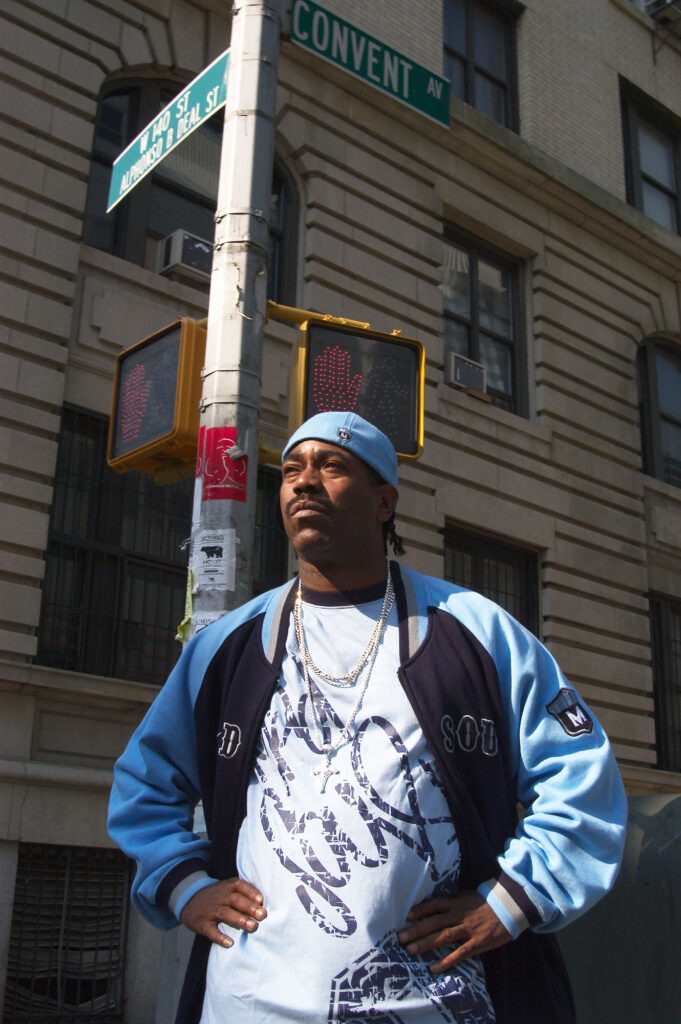
Hip-hop artist Kurtis Blow stands in the Harlem neighborhood where he grew up in New York, Oct. 8, 2003. (AP Photo/Jim Cooper)
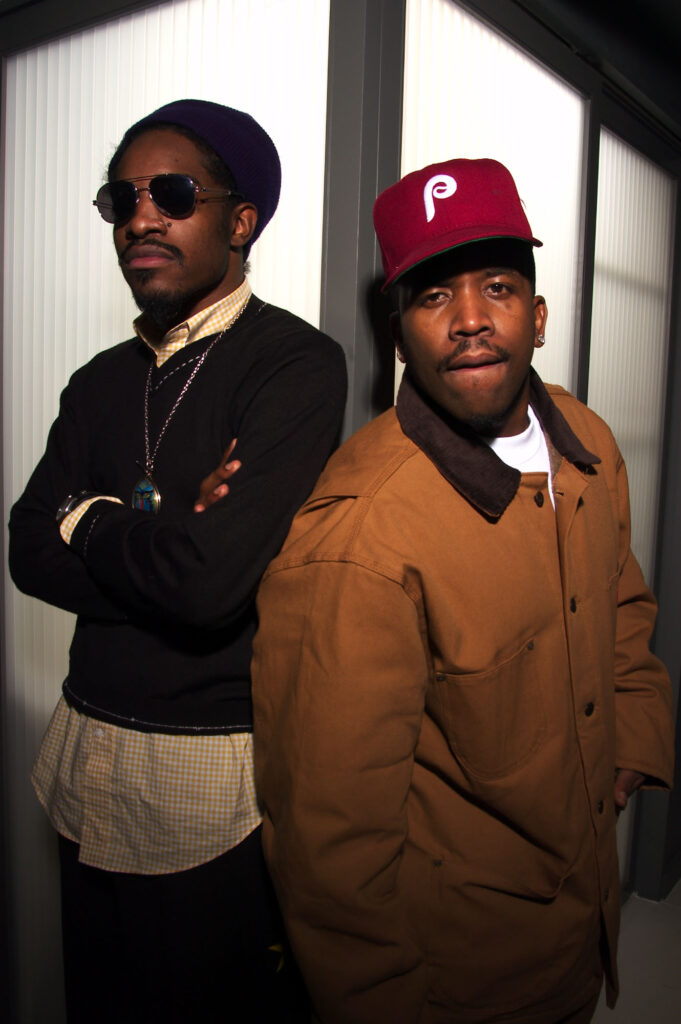
Outkast’s Andre Benjamin, left, and Antwan “Big Boi” Patton pose in New York, Oct. 30, 2003. Outkast’s newest album, the double CD set “Speakerboxxx-The Love Below,” has sold more than 3 million copies since its September release, has spawned the nation’s top two singles (the No. 1 “Hey Ya!” from Andre and “I Like The Way You Move,” from counterpart Big Boi) and has netted the band six Grammy award nominations, including album of the year, where they are favored to win at the Feb. 8 ceremony in Los Angeles. (AP Photo/Jim Cooper)
Graffiti art, originally a form of self-expression in urban neighborhoods, has become a recognized art form, exhibited in galleries and museums worldwide. Moreover, hip hop has provided a platform for social activism, empowering marginalized voices and shedding light on social and political issues.
As hip hop celebrates its 50th birthday, historians, artists and fans are reflecting on the genre’s remarkable journey from its humble beginnings to its status as a global cultural force. Observers marvel as it continues to defy expectations, challenge stereotypes, and give a voice to those often unheard.
Author, hip hop historian and journalist Davey D and others involved with hip hop in the 70s didn’t think it was going to last, he recalled. “But we were all so young,” he told The Final Call.
In hindsight, considering the totality of Black cultural expression, hip hop turning 50 shouldn’t be a surprise, Davey D continued. He views the genre as a continuum of Black people’s accomplishments, just under a different name. “It’s an oral tradition. We’ve always had that in our community, whether it was rhyming, syncopated singing, the dozens, signifying, testifying, all those type of verbal word games. Some of them test your skills, how clever you were, or how seductive you could sound, all that has been here before hip hop showed up,” said Davey D.
In addition, Black people have always had dance and move their bodies which was stifled during their enslavement as a way to get them to conform, he observed. But in their full naturalness, Black people have always danced, he said.
“If you look at the whole of history, at least here in the states, Black expression starts off being demonized,” stated Davey D. From Jazz to Funk and Soul music, hip hop has been demonized and continues to be, so as aspects of hip hop are considered classics, in hindsight, we shouldn’t be surprised that it’s 50 years old, he stated.
“It’s probably going to go another 50 and then some, because Black expression doesn’t die. It just manifests itself with slightly different angles and sometimes a different name.”
This is the first in an occasional series of articles by The Final Call examining and highlighting the 50th anniversary of Hip Hop. Final Call staff contributed to this report.
Graffiti art, originally a form of self-expression in urban neighborhoods, has become a recognized art form, exhibited in galleries and museums worldwide. Moreover, hip hop has provided a platform for social activism, empowering marginalized voices and shedding light on social and political issues.
As hip hop celebrates its 50th birthday, historians, artists and fans are reflecting on the genre’s remarkable journey from its humble beginnings to its status as a global cultural force. Observers marvel as it continues to defy expectations, challenge stereotypes, and give a voice to those often unheard.
Author, hip hop historian and journalist Davey D and others involved with hip hop in the 70s didn’t think it was going to last, he recalled. “But we were all so young,” he told The Final Call.
In hindsight, considering the totality of Black cultural expression, hip hop turning 50 shouldn’t be a surprise, Davey D continued. He views the genre as a continuum of Black people’s accomplishments, just under a different name. “It’s an oral tradition. We’ve always had that in our community, whether it was rhyming, syncopated singing, the dozens, signifying, testifying, all those type of verbal word games. Some of them test your skills, how clever you were, or how seductive you could sound, all that has been here before hip hop showed up,” said Davey D.
In addition, Black people have always had dance and move their bodies which was stifled during their enslavement as a way to get them to conform, he observed. But in their full naturalness, Black people have always danced, he said.
“If you look at the whole of history, at least here in the states, Black expression starts off being demonized,” stated Davey D. From Jazz to Funk and Soul music, hip hop has been demonized and continues to be, so as aspects of hip hop are considered classics, in hindsight, we shouldn’t be surprised that it’s 50 years old, he stated.
“It’s probably going to go another 50 and then some, because Black expression doesn’t die. It just manifests itself with slightly different angles and sometimes a different name.”
This is the first in an occasional series of articles by The Final Call examining and highlighting the 50th anniversary of Hip Hop. Final Call staff contributed to this report.
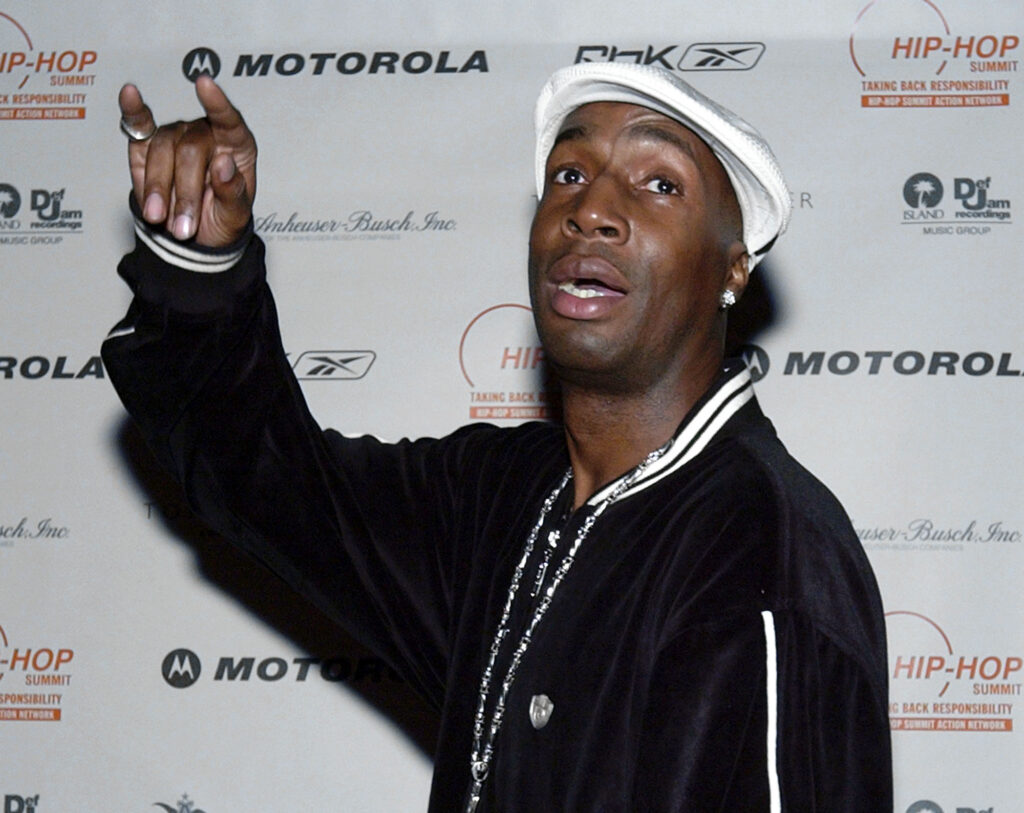
Grandmaster Flash gestures as he arrives at the Hip-Hop Summit Action Network’s first annual Action Awards benefit and dinner, Tuesday, Nov 18, 2003, in New York. (AP Photo/Julie Jacobson)

R&B performer KRS-One reacts as he looks at his award during the Billboard R&B Hip-Hop Awards Friday, Aug. 6, 2004 in Miami Beach, Fla. KRS-One received the 2004 R&B Founders Award. (AP Photo/Luis M. Alvarez)

Members of the rap group Run-DMC pose at the second Annual MTV Video Music Awards, Sept. 13,1985. Left to right: DMC, Run, and Jam-Master Jay. (AP Photo/Mario Suriani)
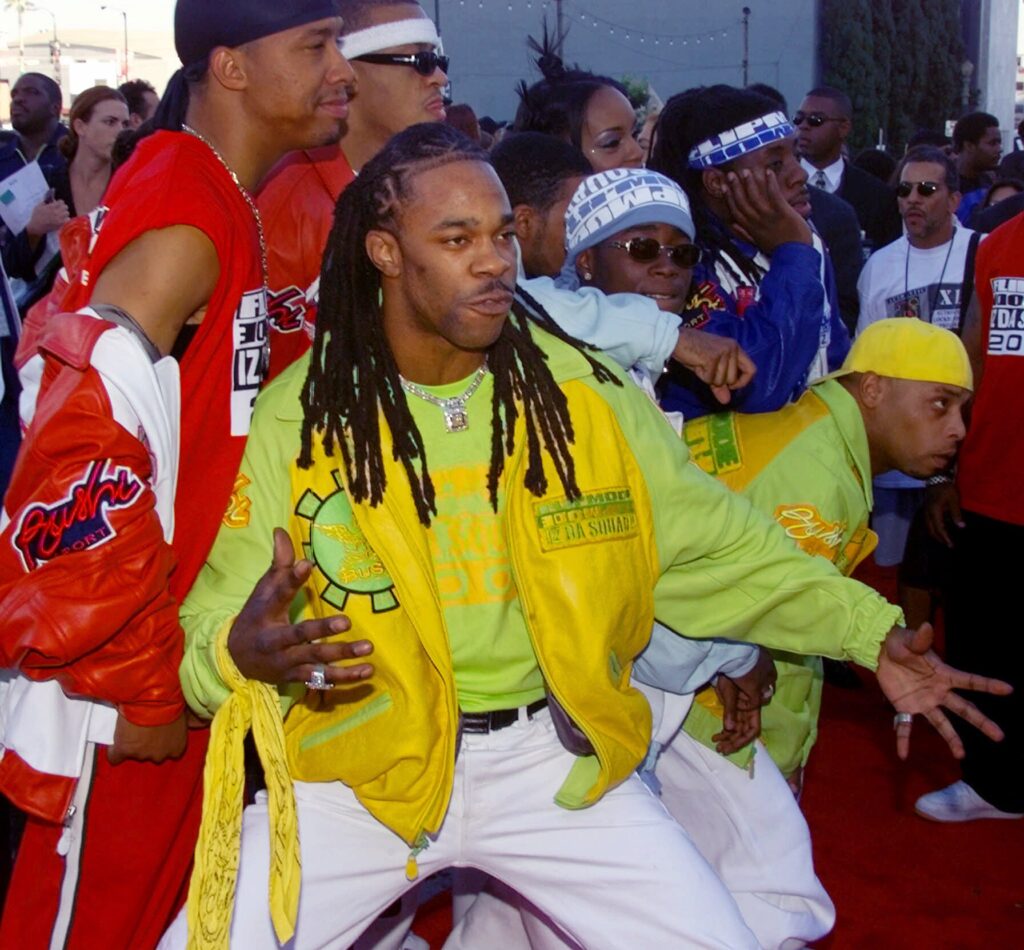
Rapper Busta Rhymes, center, poses while arriving for the first UPN’s The Source Hip Hop Music Awards at the Pantages Theater in the Hollywood area of Los Angeles Wednesday, Aug. 18, 1999. Lopes is co-hosting the show. (AP Photo/Kevork Djansezian)
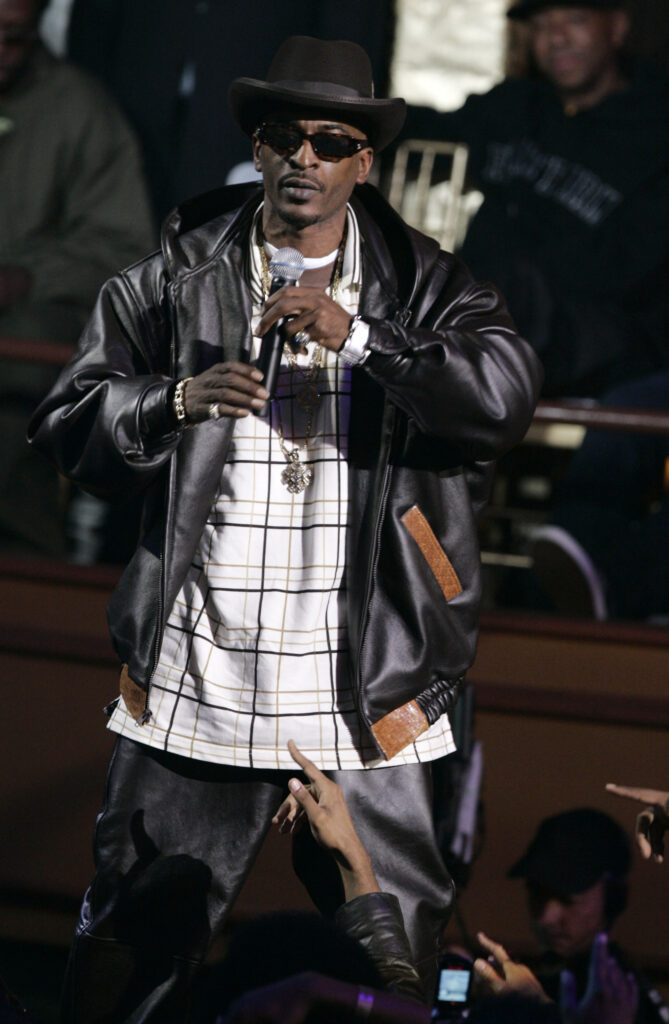
Hip Hop artist Rakim performs during the third annual VH1 Hip Hop Honors awards show Saturday, Oct. 7, 2006 in New York. Rakim was honored during the show which will air Tuesday, Oct. 17, 2006.(AP Photo/Frank Franklin II)
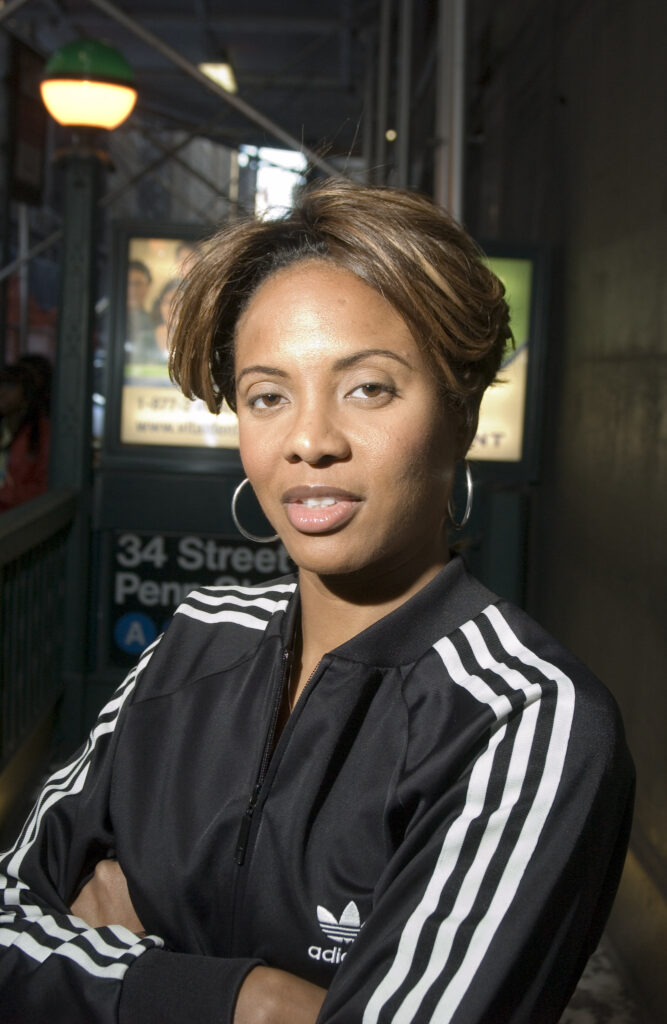
Rapper MC Lyte is photographed in New York, Oct. 7, 2006. (AP Photo/Jim Cooper)
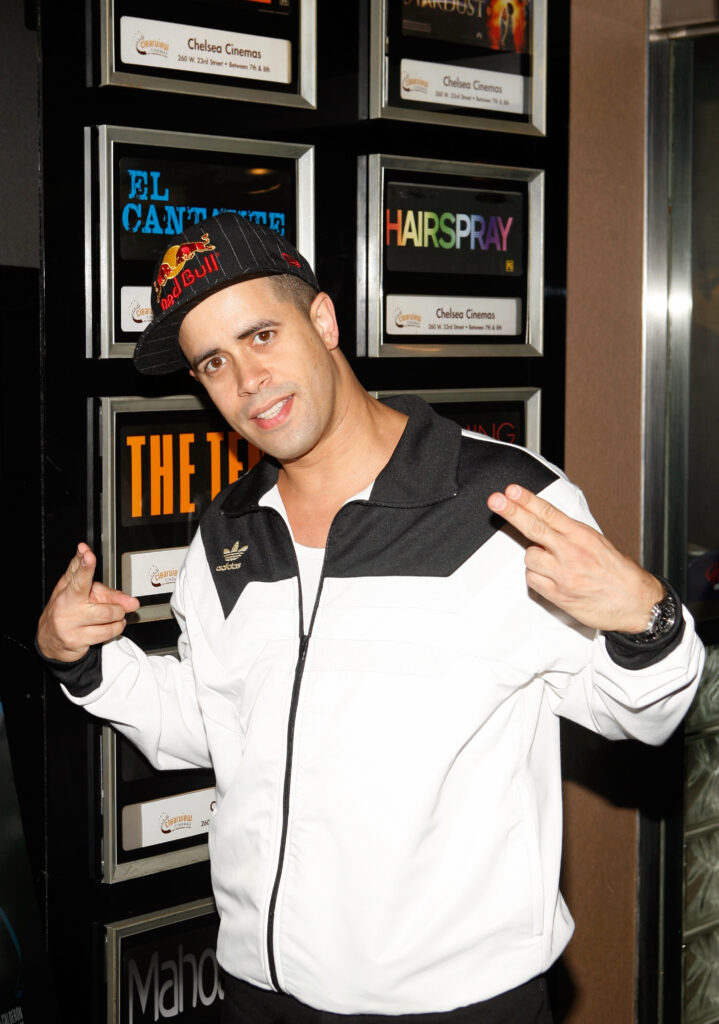
Crazy Legs of the Rock Steady Crew arrives at the Illegal Tender premiere at the Chelsea West Cinema in New York, Monday, Aug. 20, 2007. (AP Photo/Jason DeCrow)

**FILE** The family of rapper Notorious B.I.G., shown clutching his awards at the Billboard Music Awards in New York, on Dec. 6, 1995, has asked a Los Angeles judge for permission to expand their wrongful-death lawsuit against the city of Los Angeles. Notorious B.I.G., born Christopher Wallace, was fatally shot in 1997 in a sport utility vehicle shortly after a party in Los Angeles.(AP Photo/Mark Lennihan)
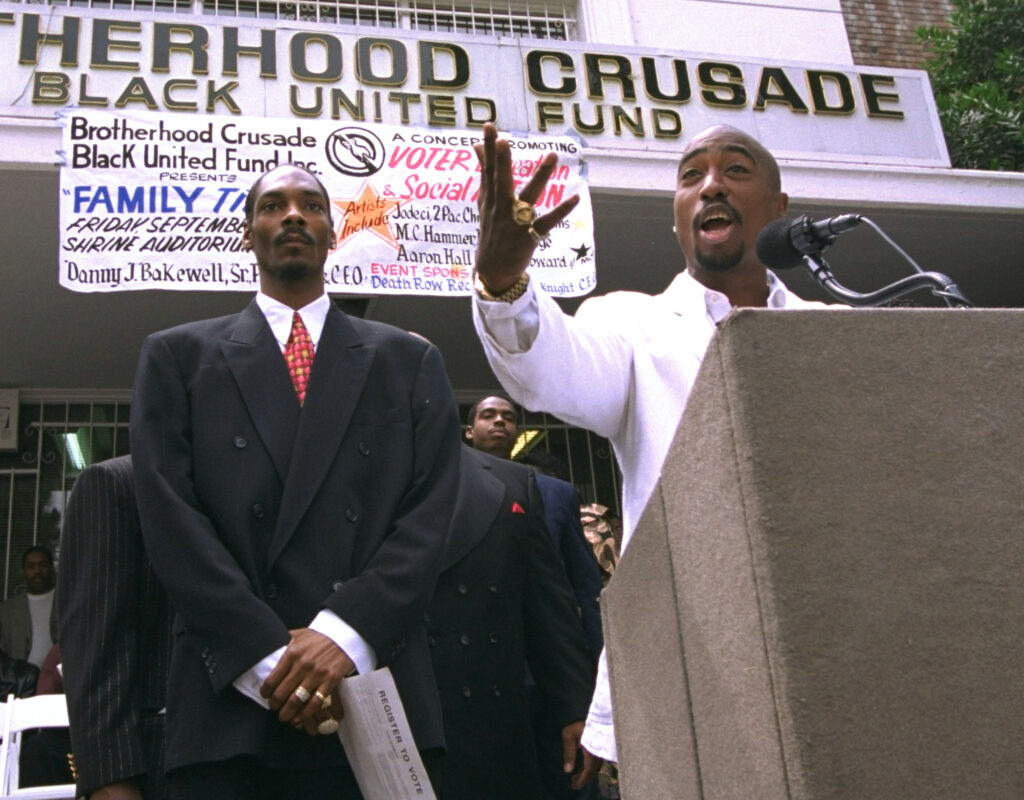
Rapper Tupac Shakur, right, speaks as fellow rap artist Snoop Doggy Dogg listens during a voter registration rally in South Central Los Angeles on August 15, 1996. Late Saturday night, September 7, 1996, Shakur and Death Row Records chairman Marion “Suge” Knight were shot in their car as they drove through the Las Vegas Strip area. (AP Photo/Frank Wiese)

The rap group Salt-N-Pepa joins arms as they march with a young girl in a Stop the Violence march in the Brooklyn borough of New York Sunday, Aug. 17, 1997. Salt-N-Pepa, from left, Cheryl James (Salt), Sandra Denton (Pepa) and Deidra Roper (Spinderella) were honored guests at the event. (AP Photo/Doug Kanter)
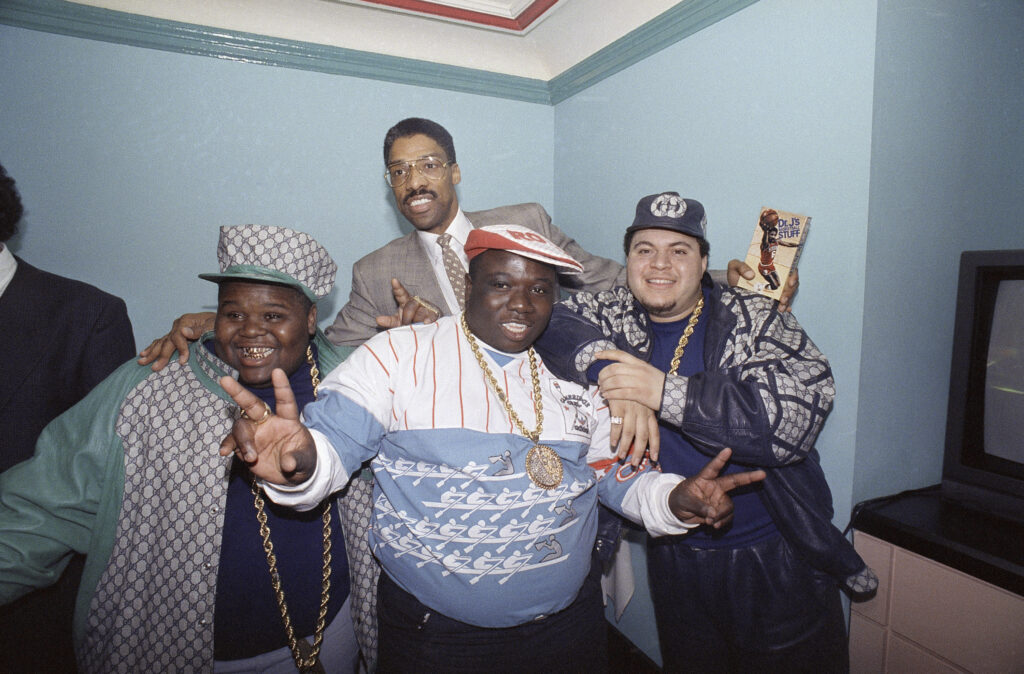
The rap music group, “The Fat Boys,” get together with NBA basketball great Julius Dr. J. Erving, background, at news conference on Monday, April 7,1987 in New York, to promote his new video “Dr. J’s Basketball Stuff.” The group consists of , left to right, Mark Morales, Damon Wimbley and Darren Robinson. (AP Photo/Wilbur Funches)
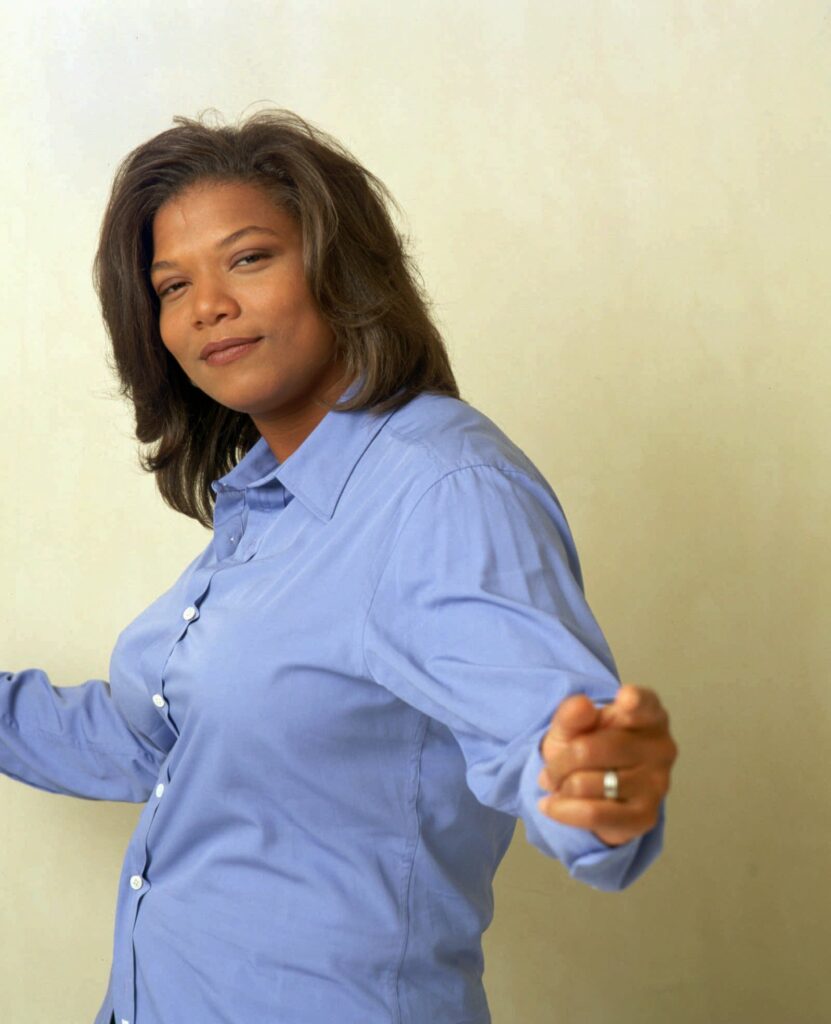
Queen Latifah poses following an interview in New York Sept. 27, 1996. Despite her first major film role in “Set It Off” and the popularity of her TV sitcom “Living Single,” Latifah’s roots remain deeply embedded in the rap music that turned the former Dana Owens into The Queen. (Wyatt Counts via AP)
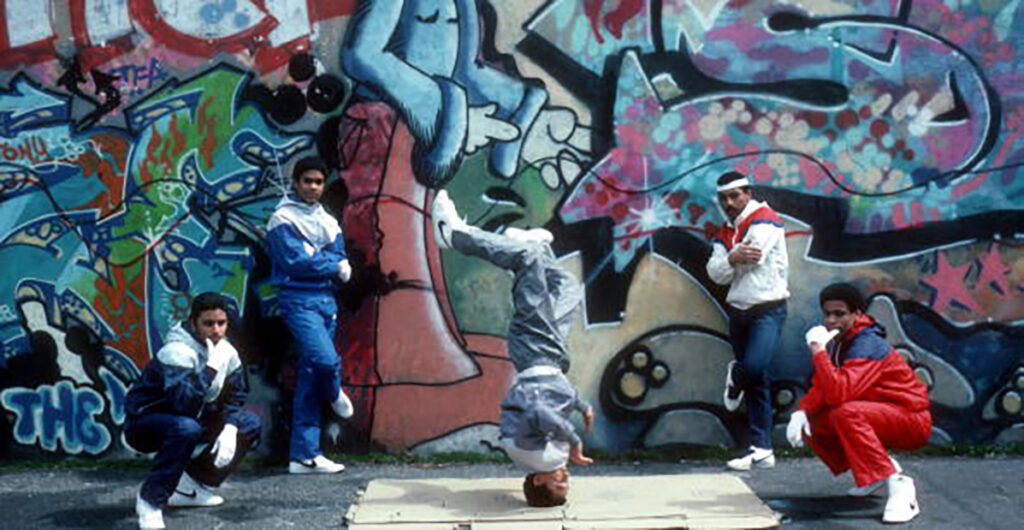
Breakdancers, April 1984, New York, Brooklyn. (Photo by Michael Ochs Archives/Getty Images)

Break dancers in competition perform on stage in front of a large crowd.
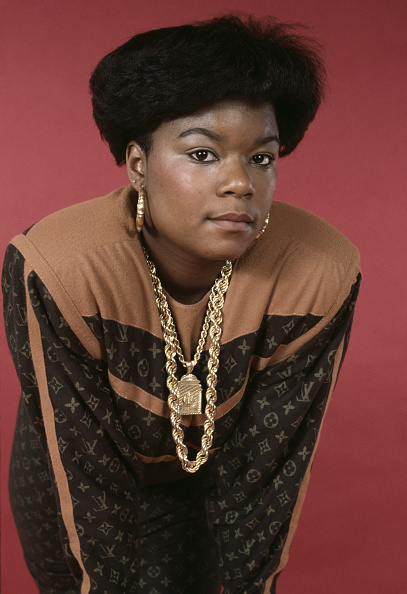
American hip hop musician and rapper Roxanne Shante, wearing an outfit by Dapper Dan, circa 1989. (Photo by Michael Ochs Archives/Getty Images)”n”n
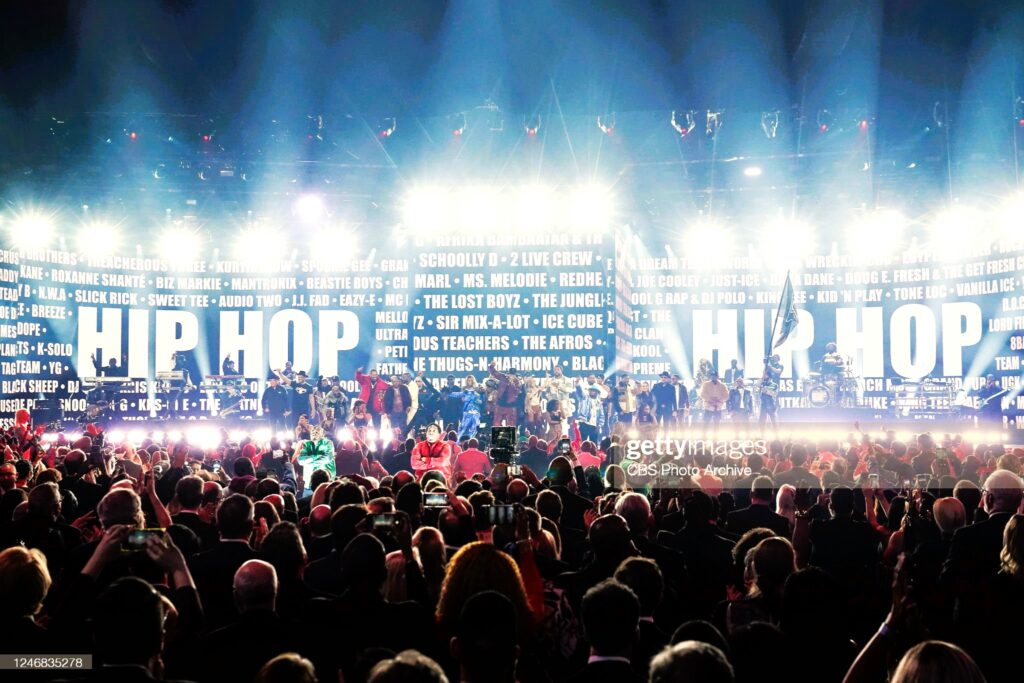
LOS ANGELES – FEBRUARY 5: HIP HOP 50 performance at THE 65TH ANNUAL GRAMMY AWARDS, broadcasting live Sunday, February 5, 2023 (8:00-11:30 PM, LIVE ET/5:00-8:30 PM, LIVE PT) on the CBS Television Network, and available to stream live and on demand on Paramount+*. (Photo by Sonja Flemming/CBS via Getty Images)
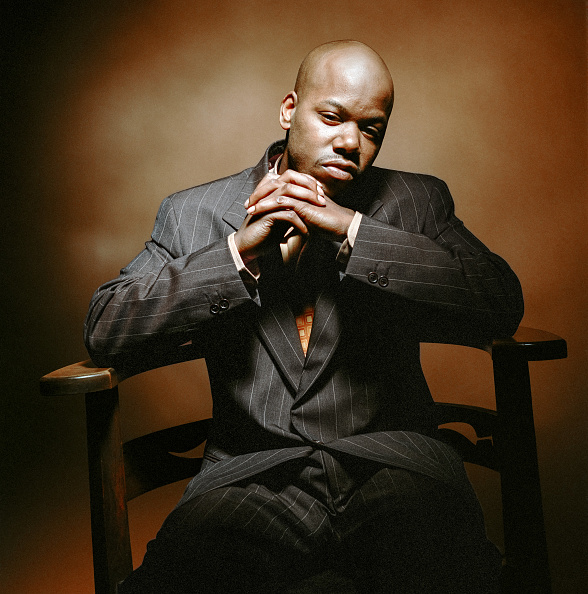
American Rapper Too Short (Also spelled Too $hort. Born Todd Anthony Shaw) poses for a portrait on August 19, 1998 in New York, New York. (Photo By Larry Busacca/Getty Images)